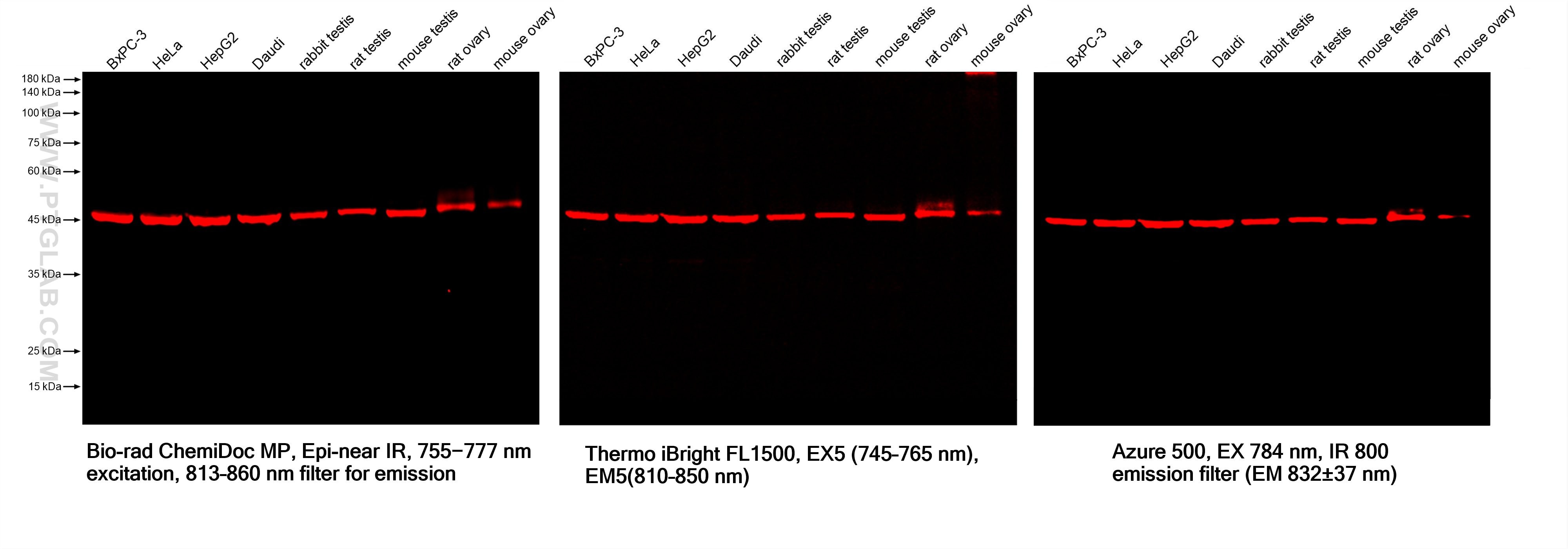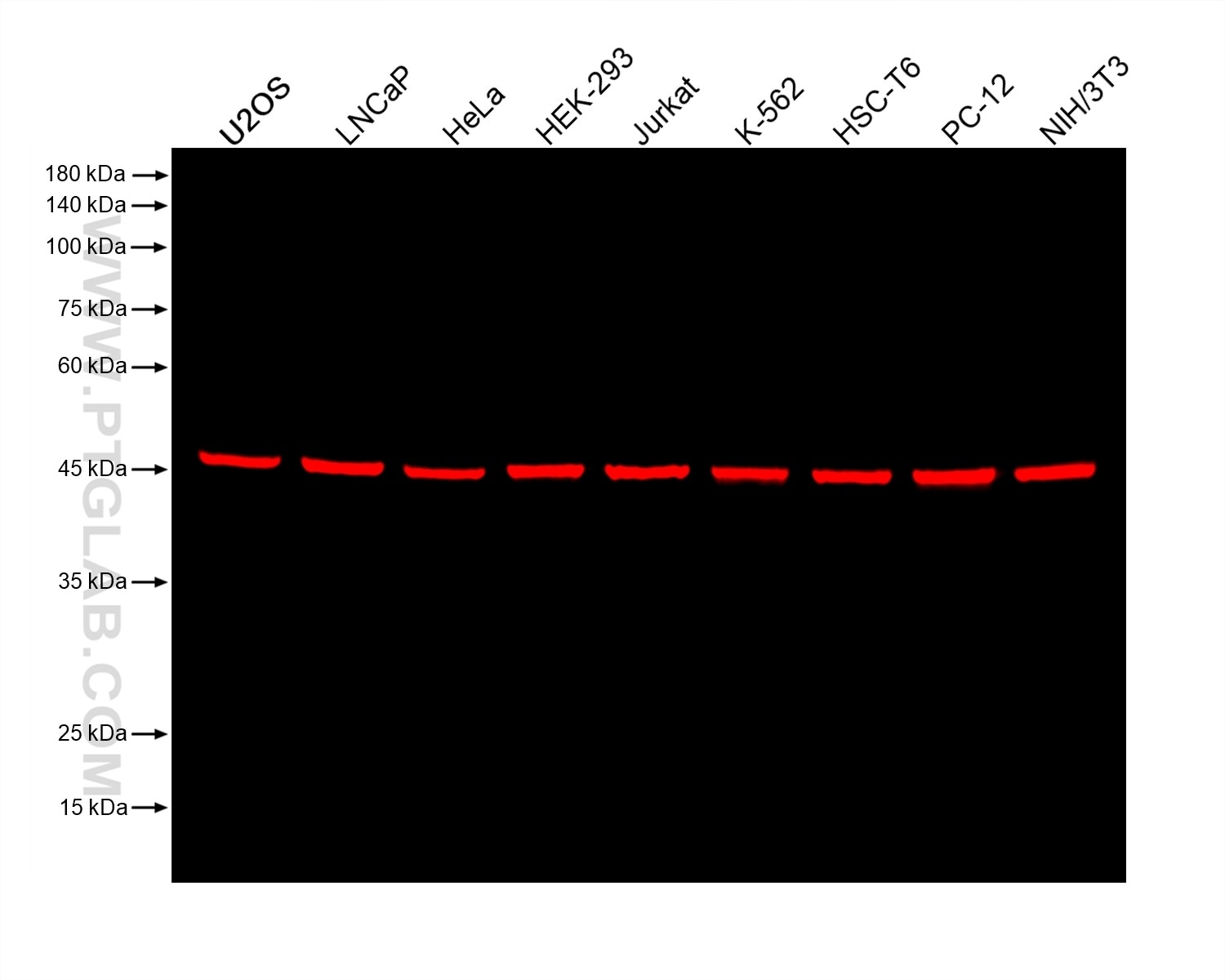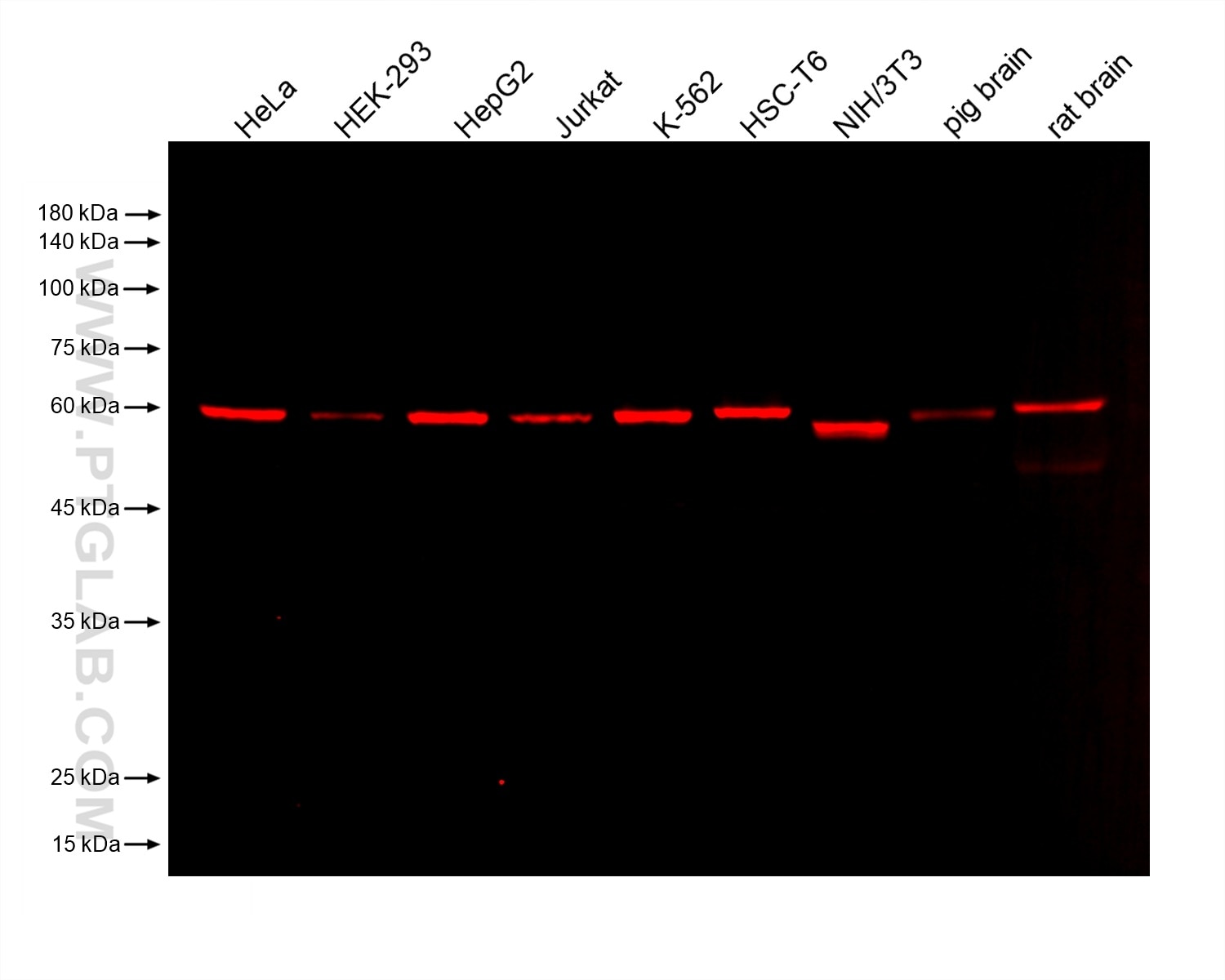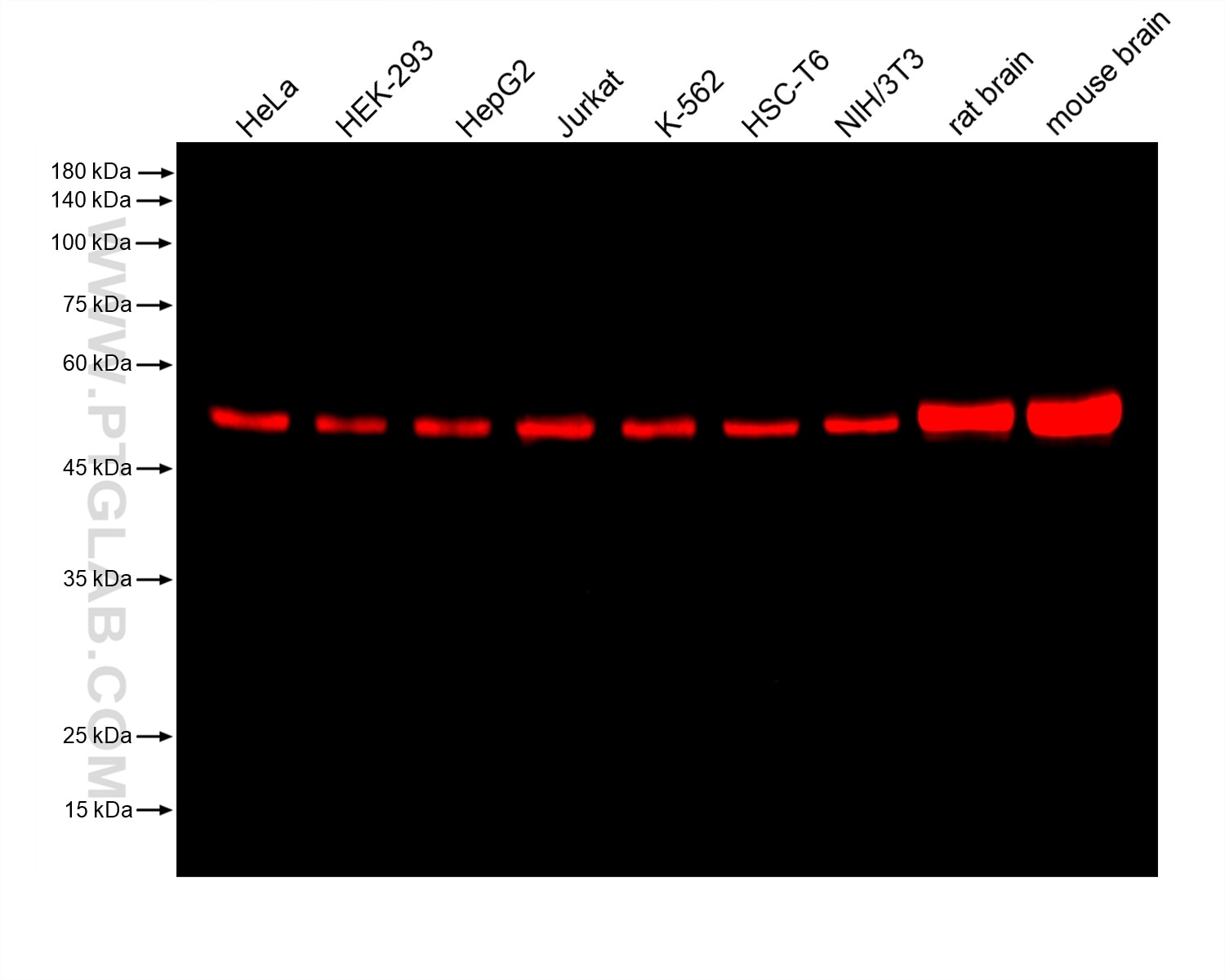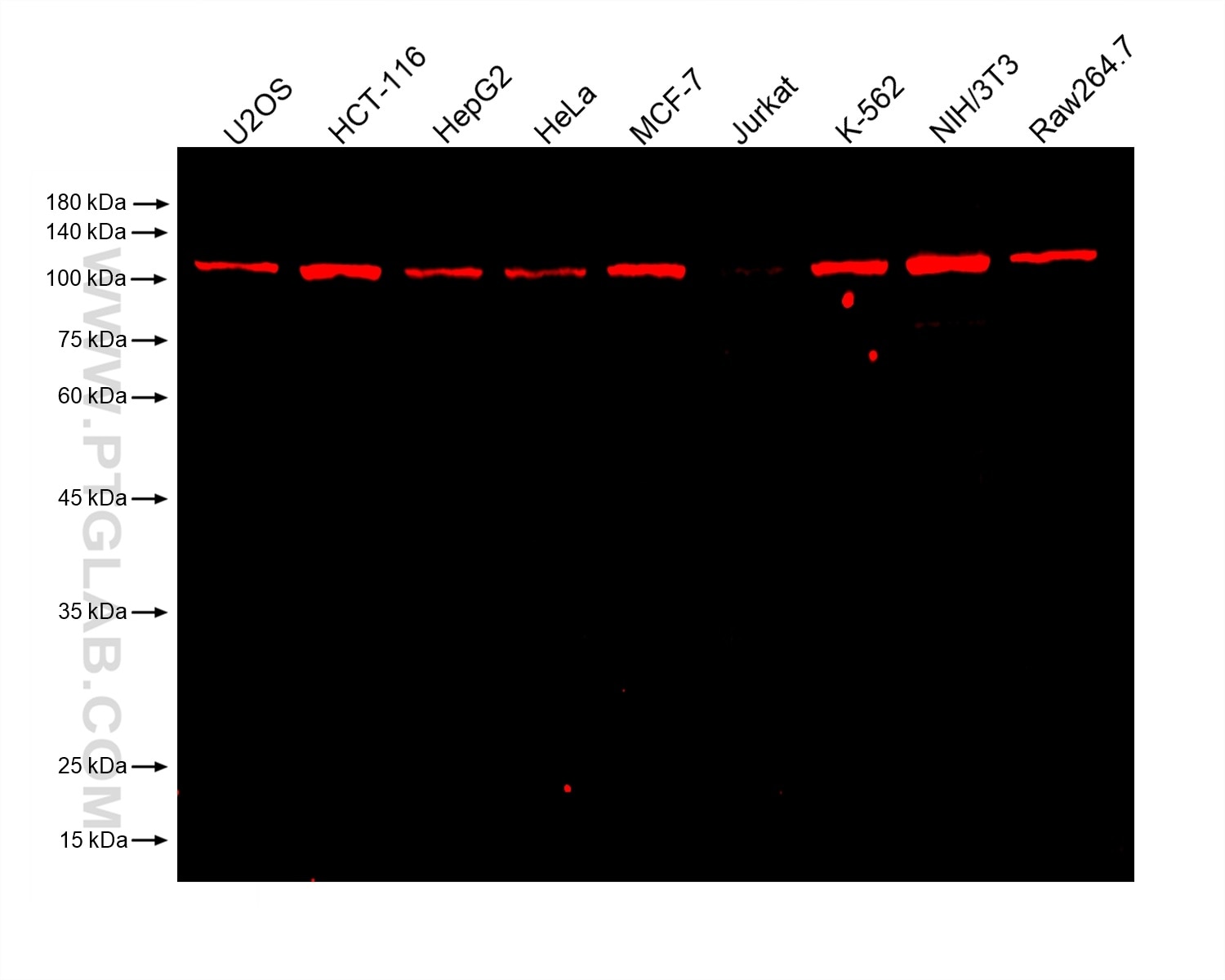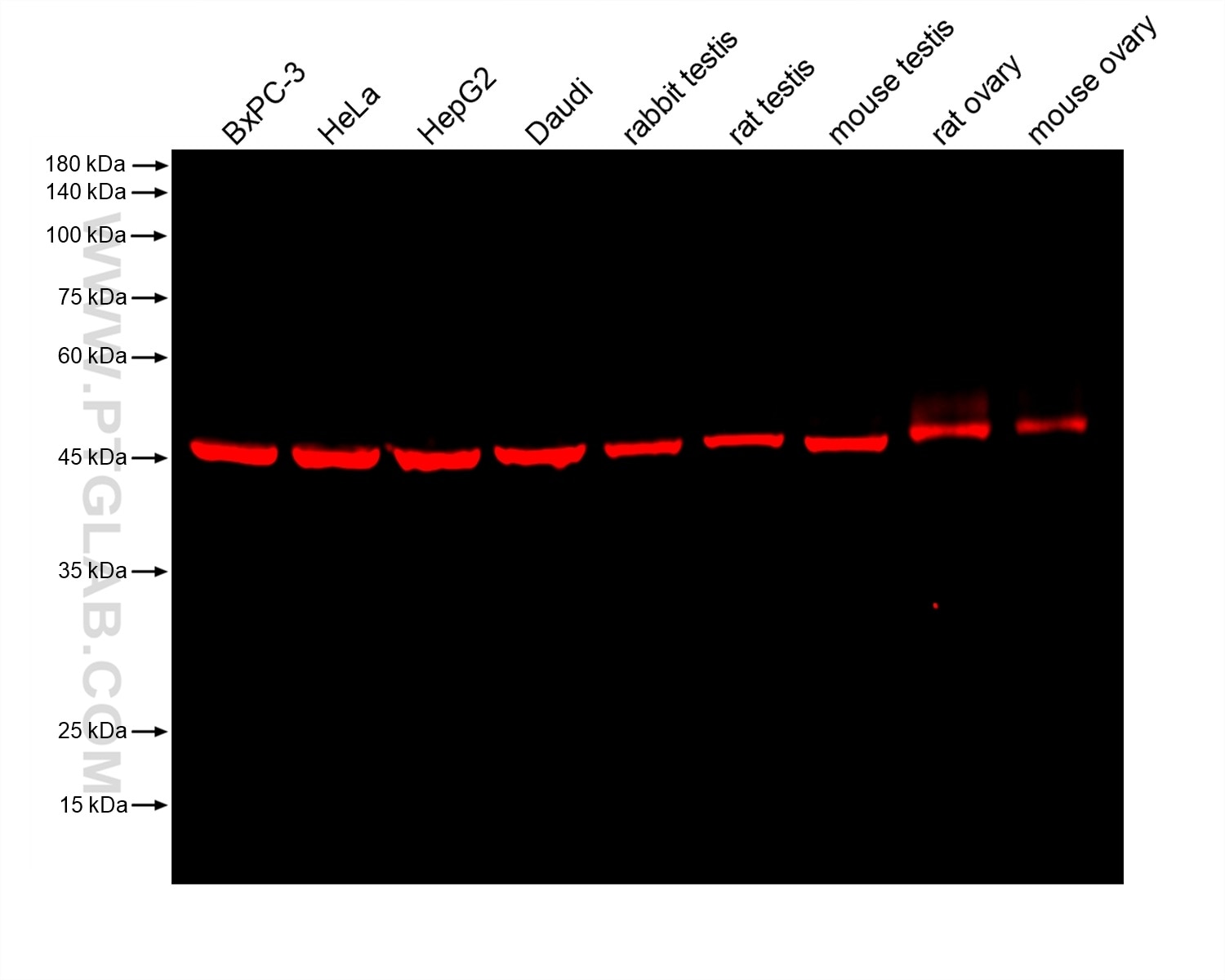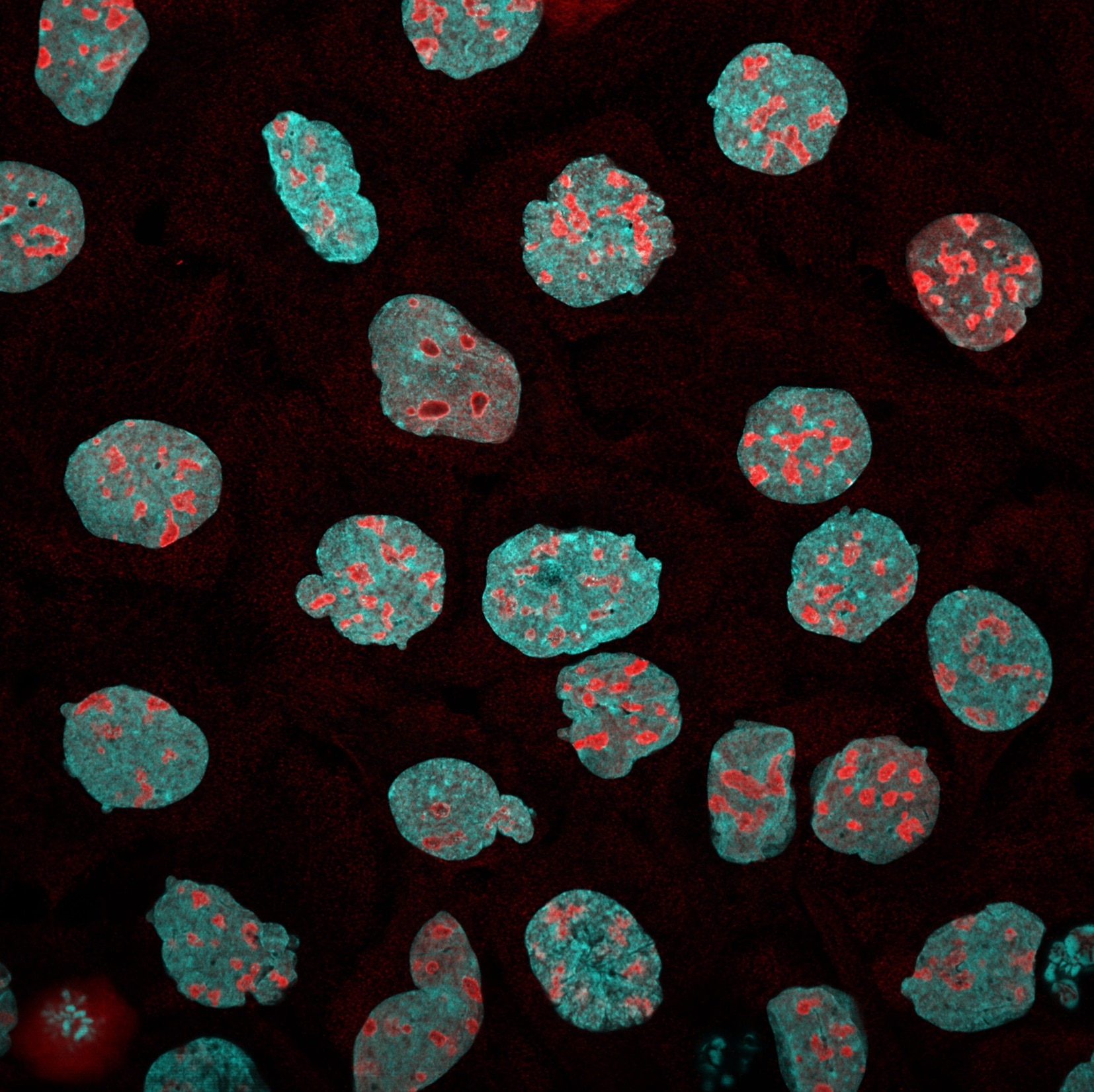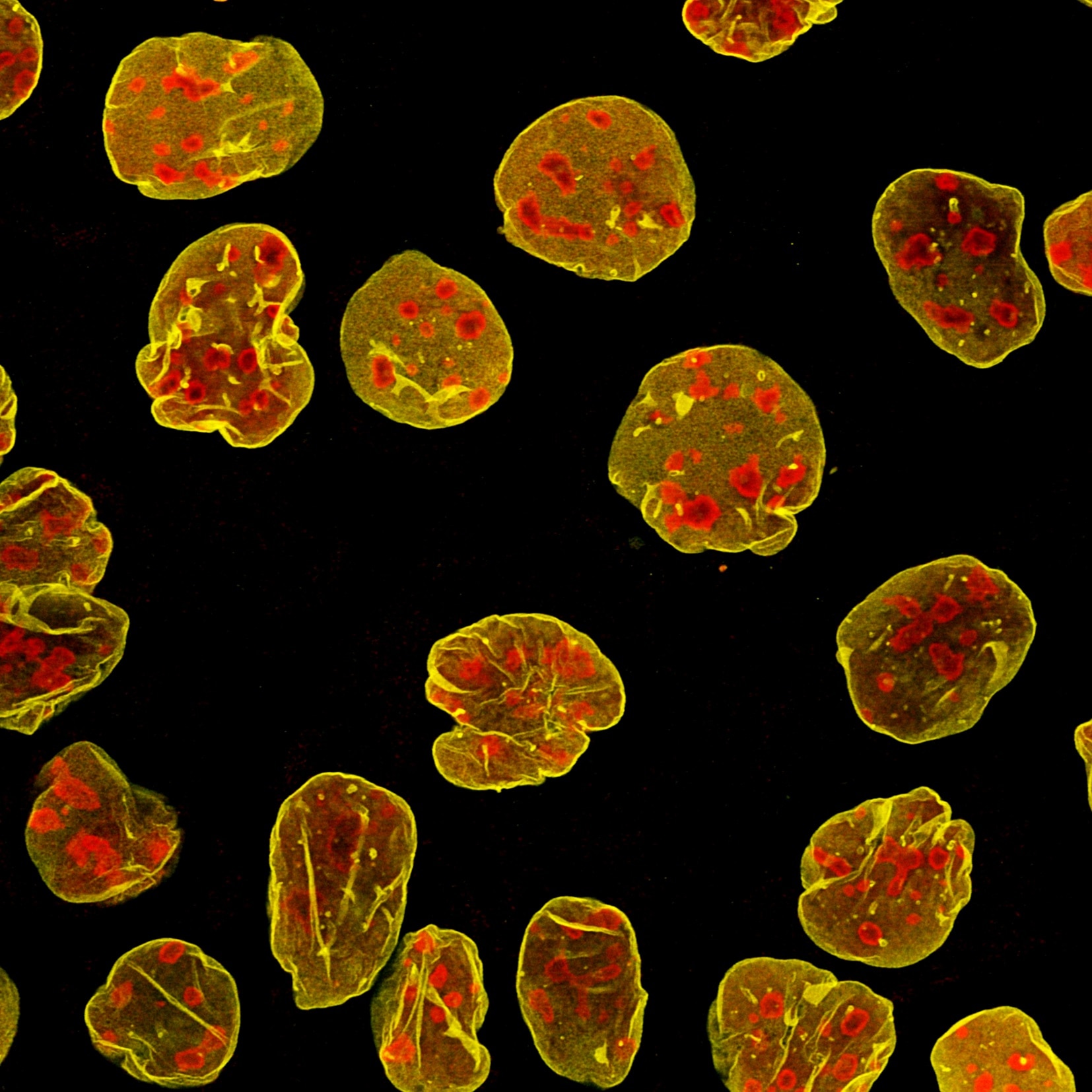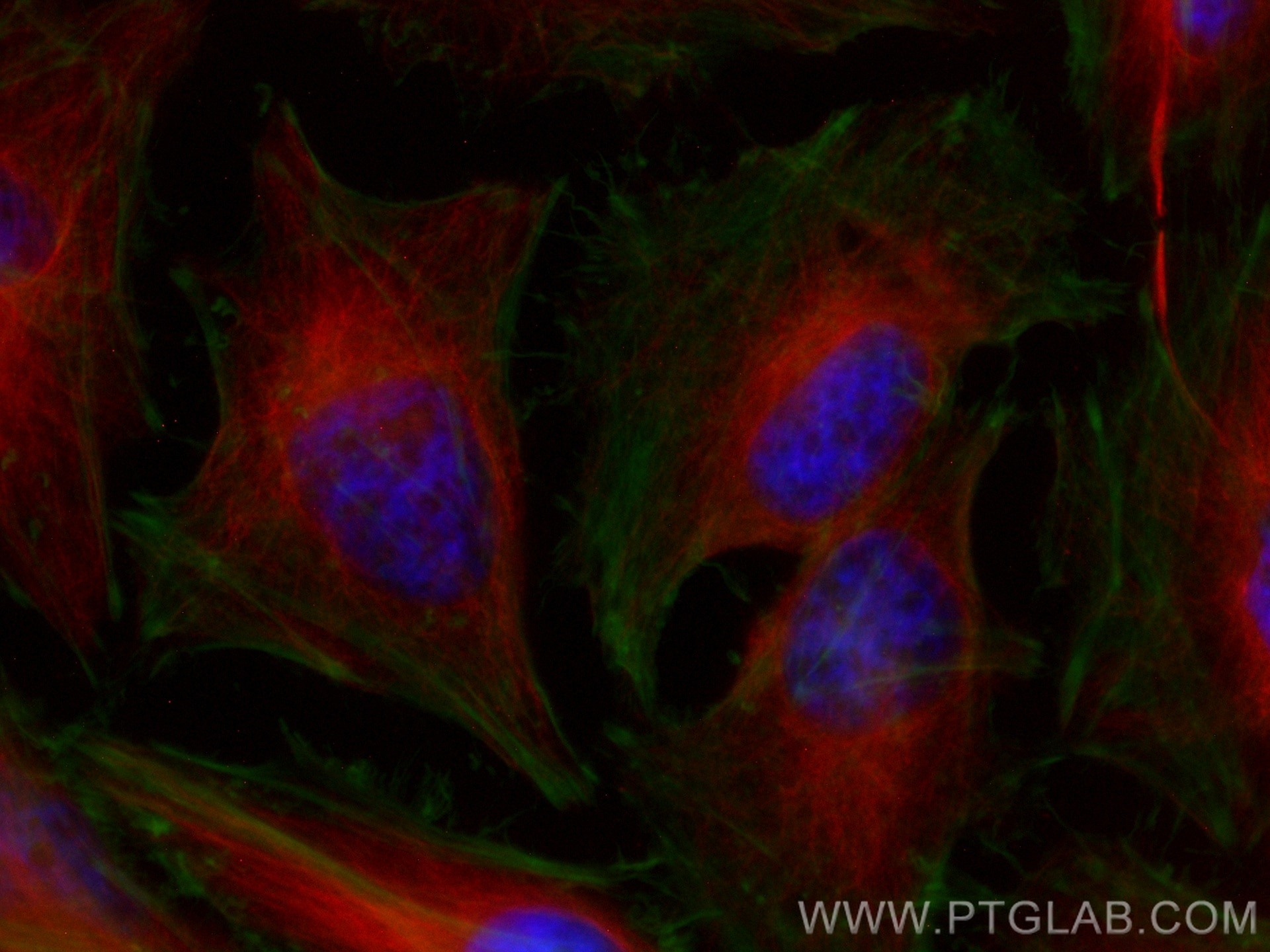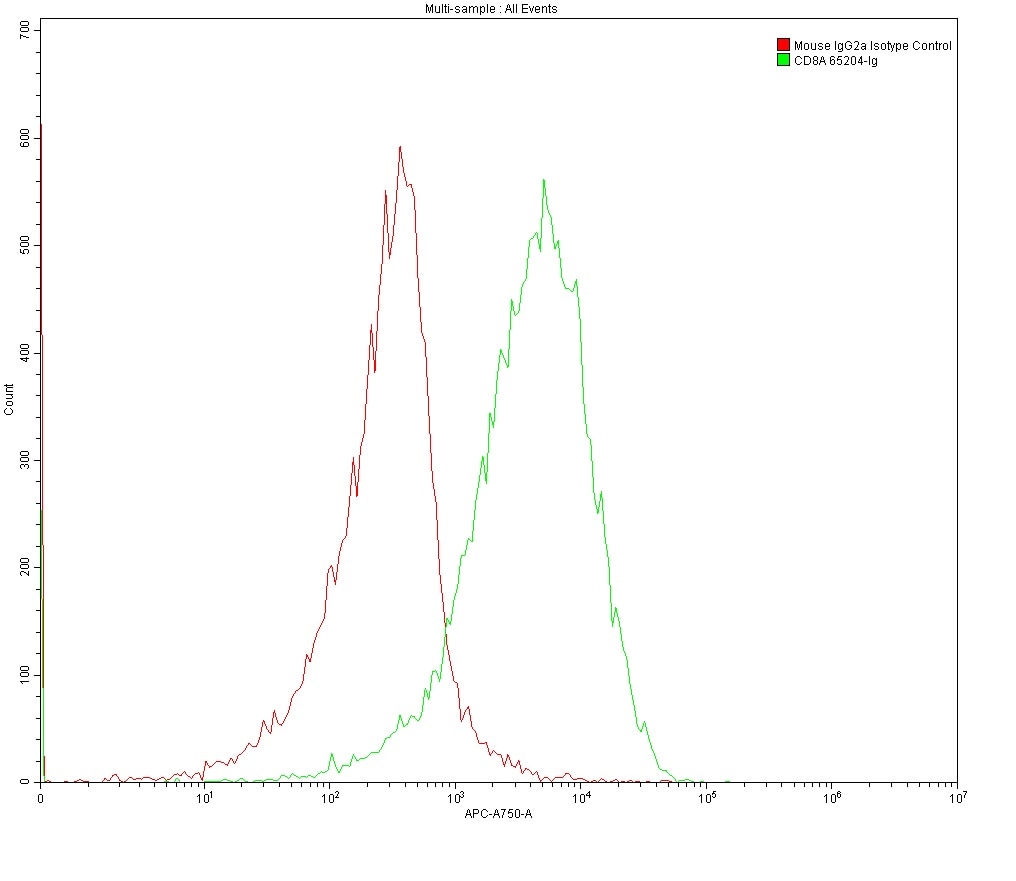Multi-rAb™ CoraLite® Plus 750-Goat Anti-Mouse Recombinant Secondary Antibody (H+L)
Multi-rAb™ Goat Anti-mouse recombinant secondary antibody is a mixture of precisely engineered recombinant monoclonal antibodies that recognize multiple complementary epitopes on mouse IgG heavy and light chain.
Applications
WB (Fluorescent),IF, FC
Conjugate
CoraLite® Plus 750
Host
Goat
Reactivity
Mouse
Cat no : RGAM006
Validation Data Gallery
Product Information
RGAM006 targets Mouse IgG (H+L) in FC and IF. It is higly specific to mouse IgG and shows minimal reactivity for rabbit, human, pig and bovine IgGs.
| Concentration | 0.5 mg/mL |
| Applications | WB (Fluorescent),IF, FC |
| Host Species | Goat |
| Species Reactivity | Mouse |
| Physical State | Liquid |
| Suggested Dilution Range | 1:200-1:1000 for IF and FC 1:5000-1:20,000 for western blotting |
| Purity | The antibody was purified from culture media supernatant by immunoaffinity chromatography using Protein G beads. |
| Storage Buffer | PBS with 50% glycerol, 10 mg/mL BSA, 0.1% Proclin-300, pH 7.4. |
| Storage Instructions | Store at -20°C. Stable for one year after shipment. |
| Fluorophore | CoraLite® Plus 750, Amax=755±4 nm; Emax=780±4 nm |
| Clonality | Multiclonal recombinant |
| RRID | AB_3073504 |
| Note | This product is for research use only,not for diagnostic or therapeutic use. |
Background
Each lot of Multi-rAb™ Secondary Antibodies is produced by mixing the same high-performing recombinant clones every time to ensure that they have high batch-to-batch consistency, which in turn results in high reproducibility of experimental data.
Near-infrared (NIR) fluorescence, with an electromagnetic spectrum of 650-900 nm, is widely used in probes for research and clinical imaging. Compared to shorter wavelength fluorescence, NIR fluorescence often results in an extraordinary signal-to-noise ratio due to little to no auto-fluorescence from tissue or protein samples. Moreover, NIR signal is relatively poorly absorbed by biomolecules and can penetrate deeply into tissues so NIR probes are suitable for vivo imaging.
As CoraLite® Plus 750 dyes need to be exited by laser if you are using this product for western blot, please confirm that your imaging device has been installed with proper laser (~720–760 nm or similar) and filter (~770-820 nm or similar). Typical compatible imagers and settings:
Thermo iBright FL1500, EX5 (745–765 nm), EM5(810–850 nm);
Bio-rad ChemiDoc MP, Epi-near IR, 755−777 nm excitation, 813–860 nm filter for emission;
Azure 500, EX 784 nm, IR 800 emission filter (EM 832±37 nm);
Li-Cor Odyssey (800 channel, EX 785nm).
Publications
| Title |
|---|
J Periodontal Res METTL3 promotes the osteogenic differentiation of human periodontal ligament cells by increasing YAP activity via IGF2BP1 and YTHDF1-mediated m6A modification |

